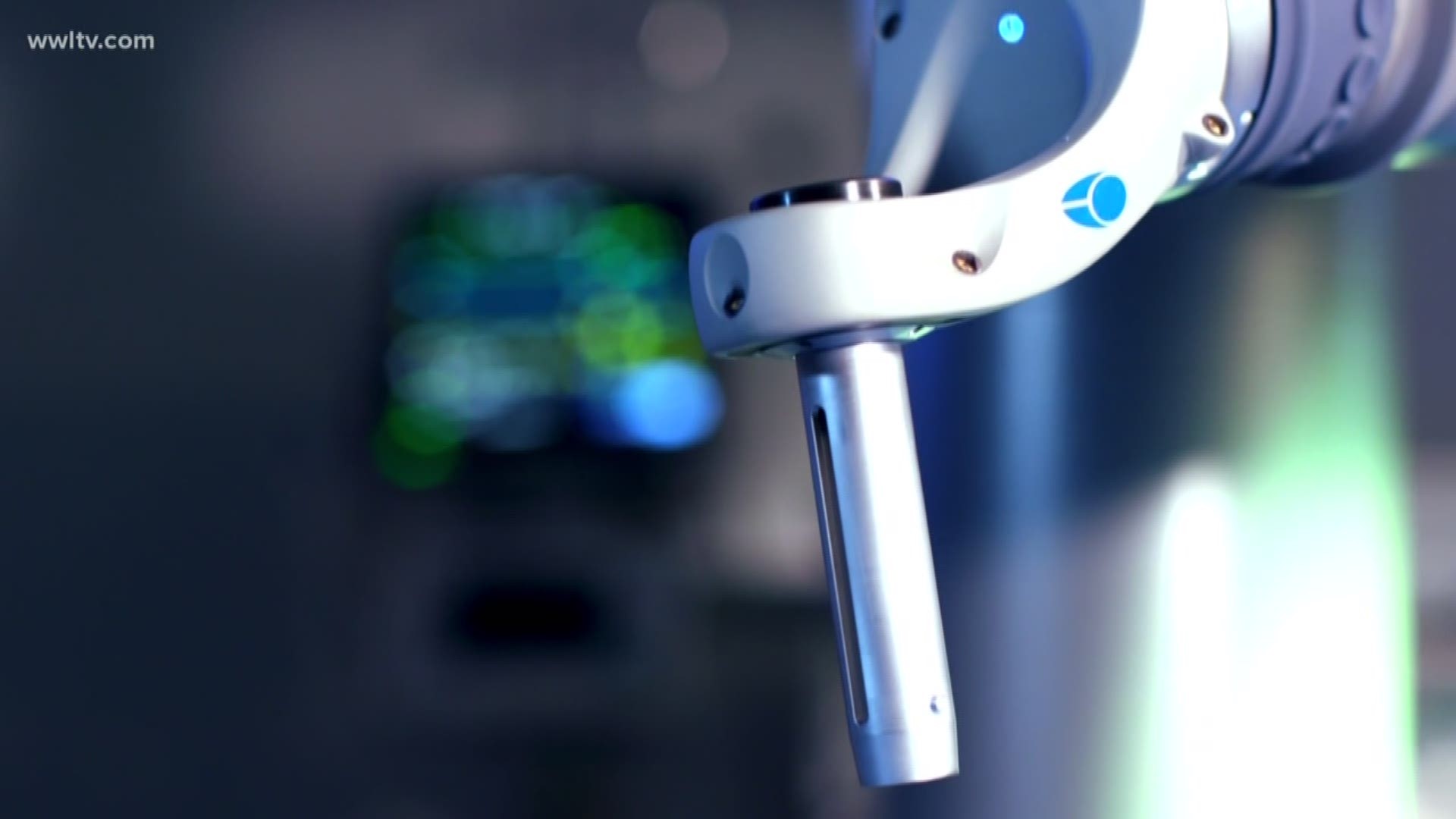COVINGTON -- Robots and computers have been helping surgeons in the operating room for years, making their techniques and cuts more precise.
But now robotic technology has entered a new area, helping local patients who have back surgery recover faster.
Patricia Foote was born with orthopedic problems. Her spine and back bones slipped forward, and one leg was shorter than the other. Now, at age 35, the pain from compressed nerves was threatening her career as a medical surgical assistant and destroying her quality of life.
"It became completely debilitating. I couldn't even drive home from work. I could barely make it through work, and I was just at my wits end," said Foote, who lives in Ponchatoula.
Over the years, she was told she needed major surgery, but now with robotic technology, she decided it was time to stop putting it off.
"The pain in the legs is completely gone. I started walking (four days after surgery) and then I was walking twice a day, like a mile and a half in the morning, and a mile-and-a-half at night," recalls Foote who had her surgery on Aug. 20.
At Avala Hospital in Covington, orthopedic spine surgeon Dr. Samer Shamieh did a spinal fusion on Patricia's lower back using the Globus ExcelsiusGPS™ robot that he calls a GPS for the spine.
"It allows me to put the perfectly placed screw, a longer screw, less radiation, minimally invasive for the patient," said Dr. Shamieh, who is also the Medical Director and Chairman of the Board at Avala Hospital.
Data from a pre-op CT scan of Patricia's back were fed into the system. Then the robotic arm lines up to the precise location where the doctor needs to put each screw. No longer does the doctor have to make a big incision and cut through muscles to see the entire area of the spine.
"So you have less blood loss, you have less of a hospital stay because there's less pain, you have more accurate and precise placement, and the recovery is much less, because the muscles aren't being cut," he explained.
He believes this accuracy protects the spine above and below the fusion and could decrease the need for future fusions. Dr. Shamieh says he gained passion for his patients eight years ago after what happened at a Saints vs. Cowboys game in Dallas.
"A drunk driver hit me and then ran over me with his Escalade, so I had 15 broken ribs, a fractured hip. If it wasn't for a passionate, private physician, who fixed my hip, I wouldn't be here today. There's no way. He saved my career completely," Dr. Shamieh said.
Now, he paid it forward to Patricia.
"With the nerve pain gone in my legs, Dr. Shamieh drastically changed my life for the better. Drastically," Foote said.
The spine surgical robot is also at Tulane in New Orleans, and Park Place Surgical Hospital in Lafayette.
DISC of Louisiana/ Dr. Shamieh:
About the robot from the company:

